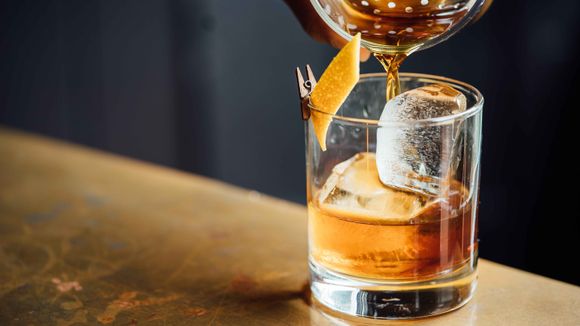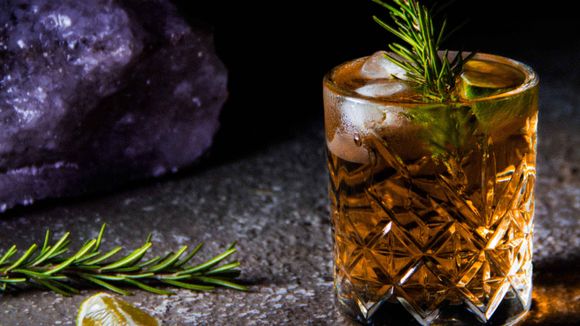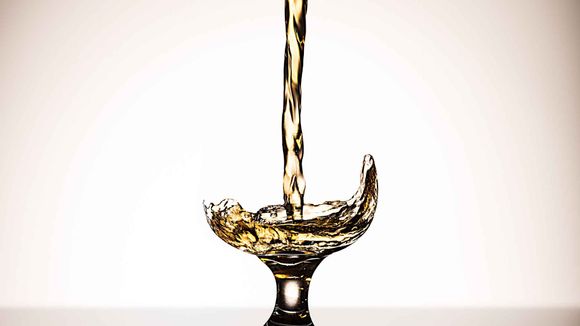The most popular herbal liqueurs in the world
Liquore alla liquirizia /CALABRIA, ITALY/
This licorice liqueur (Glycyrrhiza glabra) is traditionally associated with Calabria (Italy), which is well known for its licorice root. [ [ref. 1] ] Liqueur is made of pure licorice and neutral alcohol. The combination is sweetened and filtered, the result being a dark liqueur with a characteristic bitter-sweet taste and aroma.
Traditionally, this liqueur is used as a digestif. It can be made at home, but there are also industrially produced versions. This liqueur should always be served well chilled, clean or with ice cubes. It is also a good ingredient for making cocktails.
Suze /THUIR, FRANCE/
Originally launched in 1889, Suze is a French liqueur invention of Fernando Muro, who originally produced it in the municipality of Maisons-Alfort. He decided to distill the roots of the wild tint (Gentiana punctata), along with a secret combination of other herbs and spices, to create this complex aperitif, which is characterized by floral, bitter and slightly spicy flavors.
While the dominant aroma is given with pureed tinted roots, the drink also brings subtle earthy notes of citrus, vanilla [ [ref. 2] ], apricots (Prunus armeniaca) and caramel. Seuss is usually served cold, as a long drink, when usually combined with tonic or orange juice.

Centerba /ABRUZZO, ITALY/
"Centerba" is distilled from different plants native to the Alpine regions of Abruzzi, Italy. The name suggests that 100 herbs are needed to produce this greenish mixture, but manufacturers keep the ingredients a closely guarded secret.
The most powerful of all Italian liqueurs, "Centerba" was originally made of herbalists as a dijestif. True to Abruzzi's taste, "the more spicy, the better," Centerba creates such a strong hot sensation in the throat that it may seem to be seasoned with peperoncino.
The liqueur itself is available in a bottle in an attractive straw basket.
Amargo Obrero /ROSARIO, ARGENTINA/
"Amargo Obrero" is a dark brown bitter characterized by its herbal, almost licorice-like taste. It was originally established in 1887 as a response to the preference for sugary drinks of the higher classes, and has since been known as an aperitif of the Argentinian people and a drink of the working class.
Although it can be consumed on its own, "Amargo Obrero" is usually used in mixed drinks. While the standard for it includes a combination with a tonic, other suggestions include grapefruit juice, Coca-Cola or carbonated water. The drink is bottled at 19.9% ABV (alcohol by volume).
Herbsaint /NEW ORLEANS, UNITED STATES OF AMERICA/
Herbsaint is an anise-flavored liqueur that originates in New Orleans. It was created in 1934 by J. M. Legendre, a Pharmacist from New Orleans who freely modeled the drink on absinthe, which was banned in the United States at the time. Liqueur is green and herbaceous in taste and aroma, with dominant notes of anise (Pimpinella anisum) and licorice (Glycyrrhiza glabra). [ [ref. 3] ]
The original recipe was changed in the 1970s, but the current owner re-introduced the creator's original in 2010. Unlike absinthe, this liqueur does not contain wormwood and has more to do with French pastis. [ [ref. 4] ]
Hierbas ibicencas /IBIZA, SPAIN/
"Hierbas ibicencas" are liqueurs for Ibiza (Spain), made with various herbs that are soaked in anise-based alcohol. This liqueur has a long tradition on the island, and although it is produced on an industrial scale, many locals use their traditional family recipes and use native Mediterranean plants to make homemade versions of the drink.
A bottle of this liqueur can include a dozen different flavors. Standard options include chamomile (Matricaria) [ [ref. 5] ], laurel tree [ [ref. 6] ], rosemary (Rosmarinus) [ [ref. 7] ], thymus [ [ref. 8] ], lavender (Lavandula) [ [ref. 9] ], dill (Anethum) [ [ref. 10] ], sage (Salvia Officinalis) [ [ref. 11] ] and others. The drink is best taken as a digestif.

Herbero /VALENCIAN COMMUNITY, SPAIN/
Herbero is a Spanish liqueur originating in valencia's Serra de Mariola mountain range. Officially called "Herbero de la Serra de Mariola", this herbal liqueur is made of anise and various mountain herbs. The drink can be distilled or macerated (made by infusion with other herbs in vegetable oil).
Along with anise, it is usually made with a selection of local herbs such as sage, chamomile, mint, dill, anise, lavender, thyme and much more. "Herbero" can vary in color, from saturated yellow-green to amber. It has herbal aromas and taste, with a distinctive note of anise.
Elixir d'Anvers /ANTWERP, BELGIUM/
"Elixir d'Anvers" is an herbal liqueur from Antwerp. The exact recipe is a closely guarded secret, but is said to include more than thirty plants. After soaking and distillation matures in oak barrels. The result is a dark yellow liqueur of a distinctive herbal character.
"Elixir d'Anvers" dates back to 1863, when it was developed by François-Xavier de Beukelaer. He spent years perfecting the recipe until he achieved the desired result and created the perfect formula. The drink is still produced in the distillery de Beukelaer. The elixir can be consumed clean or with an appropriate amount of ice.

